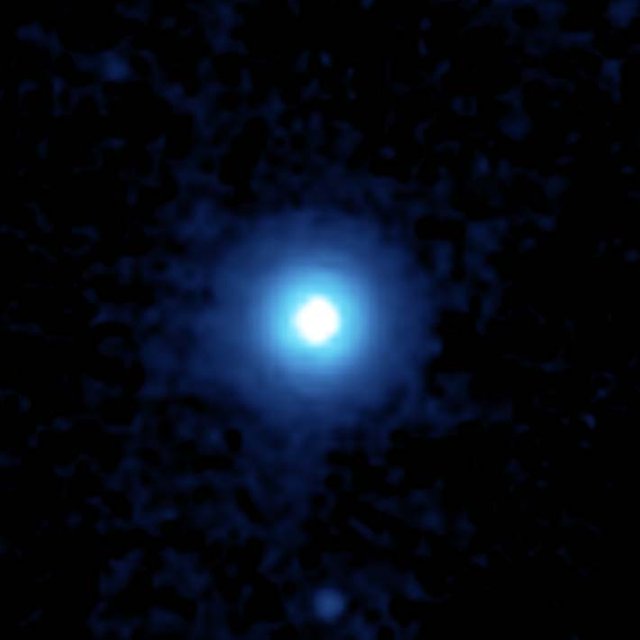The brightest stars in the sky: # 6 vega

A mid-infrared (24 μm) image of the debris disk around Vega. Image source: [1]
Vega is the fifth brightest star in the night sky and second of the northern hemisphere after Arturo. Vega is a white star, is relatively close to the Solar System, about 25 light years. At first it was taken as reference to the zero value of stellar magnitude, but later measurements have deviated this value up to +0.03. Vega is located in the constellation Lira of the boreal summer. It can be observed frequently near the zenith in northern mid-latitudes during summer nights in the Northern Hemisphere.
Vega has a size of more than twice our Sun, and is also two and a half times more massive. This size, coupled with the superior surface temperature, makes its real luminosity close to 40 times the value of our star. But the more massive stars consume their fuel more quickly, and therefore Vega will have a much shorter life than the Sun, although both are in the middle of its existence. The current age of Vega is estimated at about 400 million years (less than one tenth of the Sun), and the same is the time calculated for its disappearance.
Another peculiarity of Vega is the disk of dust that surrounds the star. It is probable that the Sun was also surrounded in this way, several billion years ago. The Vega disc could be the origin of a future planetary system similar to ours. It is even likely that at present it already has more than one planet of the Jovian or Neptunian type. The dust disk surrounding Vega includes debris or debris from past collisions between asteroids. They could also be small protoplanetary objects that fractured and formed a structure similar to our Kuiper Belt.
More details here: Vega

Artist's impression of a planet around Vega. Image source: [2]
<iframewidth="560"height="315"src="
